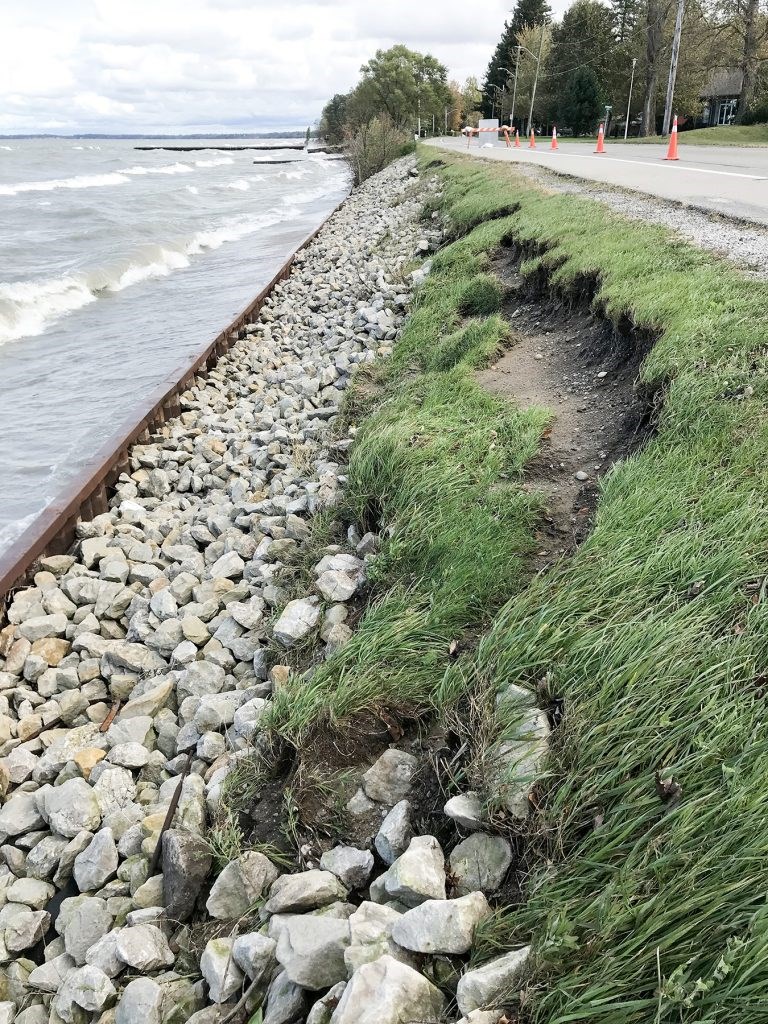Troy Shantz
Crews and excavators in Bright’s Grove have rumbled back into action to continue the battle for Sarnia-Lambton’s shoreline.
Two projects have closed down much of Old Lakeshore Road near Helen and Marion avenues, while another section near Kenwick Street is nearing completion.
Sarnia’s engineer says the work will continue into the fall.
“All the projects this year were stone revetments along the shoreline,” David Jackson said. “These are areas that were in very poor condition and experiencing failures due to the high water levels.”
Lake Huron has reached record heights this year and is currently about three feet (one metre) above its long-term average for July.
“The levels have fluctuated for decades. No one can really predict how much higher they’ll go or when they would start to lower, or what that time frame looks like,” Jackson said.
“We would love to see it go down… but right now we just have to deal with the reality of extreme lake levels and the damage that causes to our shoreline.”
The work is the first tangible sign of the city’s 10-year, $25-million plan to slow Lake Huron’s advance. Initial construction will see sloped stone revetments added to immediately secure the bank.
Groynes, which extend into the lake from shore, allow the new beach to build up, a city report said earlier this year.
“Certainly for the next few years there’s going to be regular construction activity out along that shoreline, and once all those areas are upgraded then it should be in great condition for many years to come,” said Jackson.
The new shoreline is expected to last 50 to 100 years.
A combination of revetments and steel or stone groynes spaced to support beach development is the approach recommended by the St. Clair Conservation Authority and coastal engineers.
Armour stone revetments were first developed along the shoreline in the 1980s, the agency's director of water resources, Girish Sankar, told a recent Kiwanis Club meeting.
Proper use of rocks, vegetation, and other materials can soften the land-water interface, he explained.
“We’re trying to control loss of land," Sankar said. "By doing so we’re also improving the aquatic habitat in the area. We’re also improving the appearance.”
Until this year, Sarnia had been spending money on repeated emergency repairs when storms washed out sections of bank.
